A layer of smog covered Ghaziabad this morning. According to the Air Quality Index (AQI) data, Indirapuram at 480, Loni at 479, Sanjay Nagar at 479 and Vasundhara at 489 - all in 'Severe' category.
Delhi-NCR covered with smog as air quality deteriorates
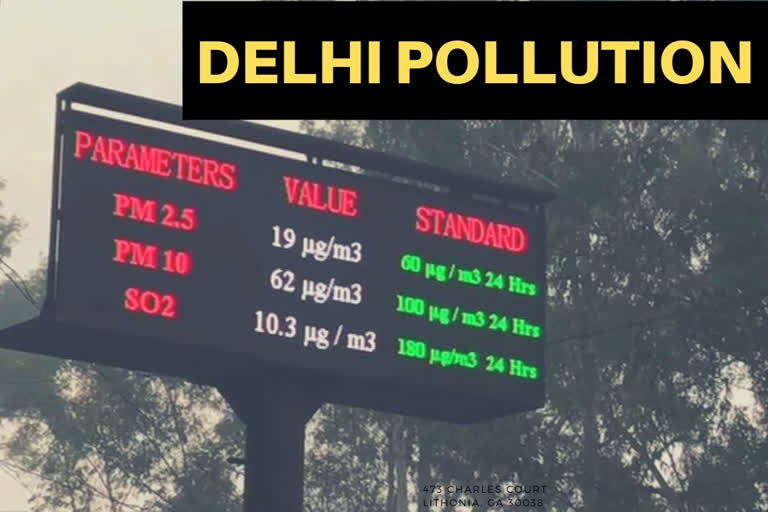
10:44 November 14
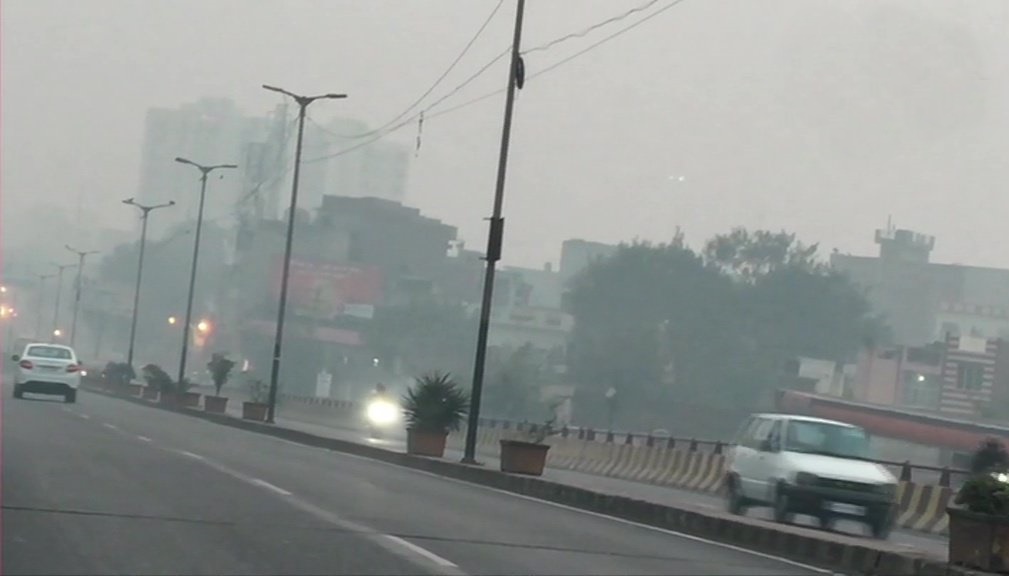
09:42 November 14
Delhi: Air quality remains severe, schools closed
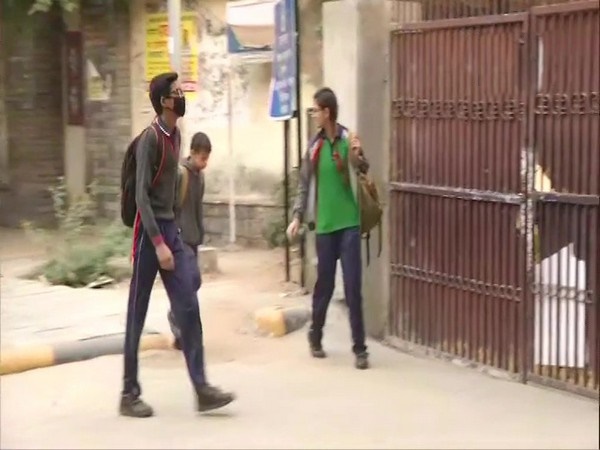
New Delhi: The air quality in Delhi and NCR region remained in the 'Severe' category on Thursday morning as the private and government-run schools in the national capital remained closed for today and tomorrow.
According to the System of Air Quality and Weather Forecasting and Research (SAFAR), the overall air quality of the national capital docked at 472 at 7:00 AM on Wednesday.
The overall Delhi AQI is at the higher end of the 'Severe' category.
Air quality condition is likely to marginally improve by tomorrow (Friday), but a reasonable improvement to the 'very poor' is expected only by November 16 (Saturday).
The Supreme Court had on Wednesday asked the central government to explore Hydrogen based fuel technology to find solutions to combat air pollution in Northern India including Delhi-NCR.
08:17 November 14

Major pollutants PM 2.5 & PM 10, both at 500 (severe category), in Lodhi Road area, according to the Air Quality Index (AQI) data.
08:16 November 14
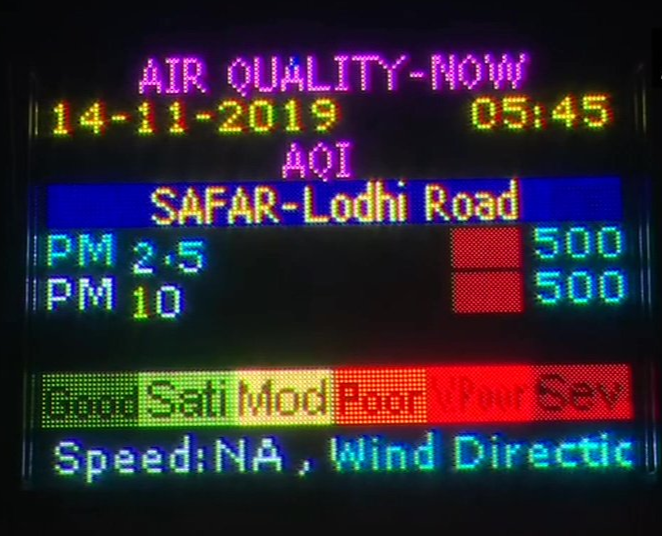
Air Quality Index (AQI) at 474 (severe) in ITO area, as per Central Pollution Control Board (CPCB) data.
08:14 November 14
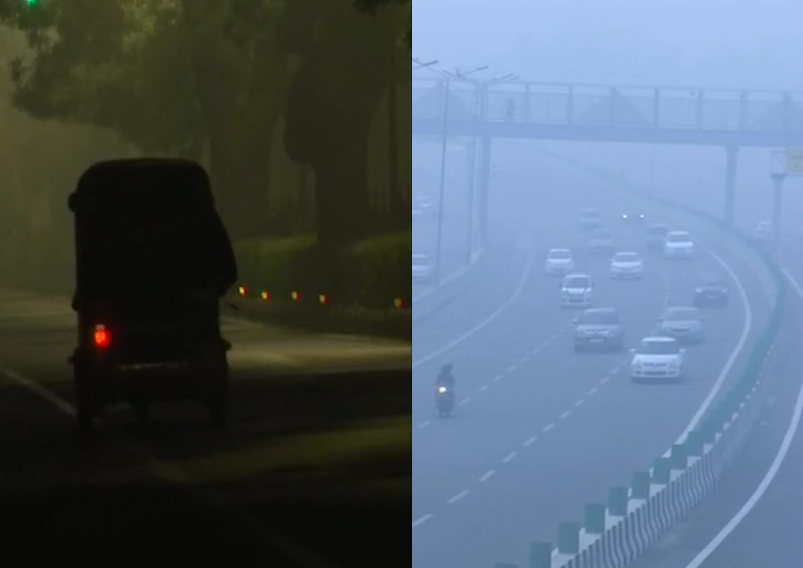
A layer of smog blankets the national capital this morning; visuals from Akshardham.
07:40 November 14
Delhi-NCR covered with smog as air quality deteriorates
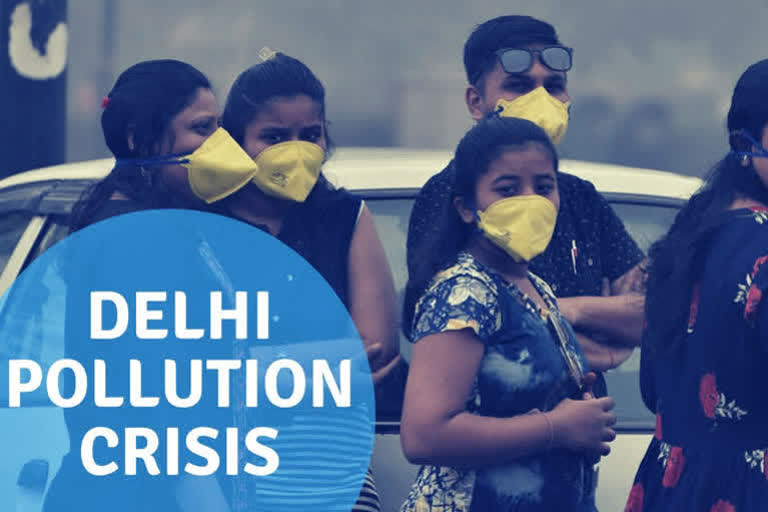
New Delhi: The noxious haze pertains to linger in Delhi and its suburbs with raging stubble fires in neighbouring states, fall in the temperature and wind speed pushing the city's air quality in the 'severe' zone.
Madhavan Rajeevan, Secretary, Ministry of Earth Sciences, tweeted earlier, "Forecast (green) suggests air quality in severe+ category by Nov 14 (sic)."
A dip in wind speed and temperature makes the air cold and denser, leading to accumulation of pollutants, said Kuldeep Srivastava, head of the India Meteorological Department's regional weather forecasting centre.
An AQI between 201 and 300 is considered 'poor', 301-400 'very poor' and 401-500 'severe'. An AQI above 500 falls in the 'severe plus' category.
Experts said the spike in pollution levels can be attributed to a significant decline in wind speed. Incidents of stubble burning in Haryana and Punjab have increased and northwesterly winds have been bringing more farm fire plumes to the Delhi-NCR region, they said.
According to SAFAR, the share of stubble-burning accounted for 25 per cent of Delhi's pollution on Tuesday, up from 18 per cent on Monday.
"No sudden recovery is expected at least for the next two days and the AQI is likely to deteriorate further towards severe-plus category by tomorrow. The condition may slightly improve by November 15," it said in a report.
For around a week after Diwali, a pungent smog lingered over Delhi-NCR as a result of emissions from firecrackers, stubble burning and unfavourable weather.
As the air pollution neared the emergency level on November 1, a Supreme Court-mandated panel declared a public health emergency and the administration ordered closure of schools till November 5.
Last week, the apex court had pulled up the Centre and state governments for their inability to curb stubble-burning in Punjab and Haryana and bring air pollution in Delhi under control.
The period between October 15 and November 15 is considered critical as a maximum number of stubble-burning incidents take place in this span in Punjab and adjoining states, which is one of the main reasons for the alarming spike in pollution in Delhi-NCR.
Also read|Delhi-NCR schools to be closed on Nov 14-15 as air quality deteriorates
10:44 November 14

A layer of smog covered Ghaziabad this morning. According to the Air Quality Index (AQI) data, Indirapuram at 480, Loni at 479, Sanjay Nagar at 479 and Vasundhara at 489 - all in 'Severe' category.
09:42 November 14
Delhi: Air quality remains severe, schools closed

New Delhi: The air quality in Delhi and NCR region remained in the 'Severe' category on Thursday morning as the private and government-run schools in the national capital remained closed for today and tomorrow.
According to the System of Air Quality and Weather Forecasting and Research (SAFAR), the overall air quality of the national capital docked at 472 at 7:00 AM on Wednesday.
The overall Delhi AQI is at the higher end of the 'Severe' category.
Air quality condition is likely to marginally improve by tomorrow (Friday), but a reasonable improvement to the 'very poor' is expected only by November 16 (Saturday).
The Supreme Court had on Wednesday asked the central government to explore Hydrogen based fuel technology to find solutions to combat air pollution in Northern India including Delhi-NCR.
08:17 November 14

Major pollutants PM 2.5 & PM 10, both at 500 (severe category), in Lodhi Road area, according to the Air Quality Index (AQI) data.
08:16 November 14

Air Quality Index (AQI) at 474 (severe) in ITO area, as per Central Pollution Control Board (CPCB) data.
08:14 November 14

A layer of smog blankets the national capital this morning; visuals from Akshardham.
07:40 November 14
Delhi-NCR covered with smog as air quality deteriorates

New Delhi: The noxious haze pertains to linger in Delhi and its suburbs with raging stubble fires in neighbouring states, fall in the temperature and wind speed pushing the city's air quality in the 'severe' zone.
Madhavan Rajeevan, Secretary, Ministry of Earth Sciences, tweeted earlier, "Forecast (green) suggests air quality in severe+ category by Nov 14 (sic)."
A dip in wind speed and temperature makes the air cold and denser, leading to accumulation of pollutants, said Kuldeep Srivastava, head of the India Meteorological Department's regional weather forecasting centre.
An AQI between 201 and 300 is considered 'poor', 301-400 'very poor' and 401-500 'severe'. An AQI above 500 falls in the 'severe plus' category.
Experts said the spike in pollution levels can be attributed to a significant decline in wind speed. Incidents of stubble burning in Haryana and Punjab have increased and northwesterly winds have been bringing more farm fire plumes to the Delhi-NCR region, they said.
According to SAFAR, the share of stubble-burning accounted for 25 per cent of Delhi's pollution on Tuesday, up from 18 per cent on Monday.
"No sudden recovery is expected at least for the next two days and the AQI is likely to deteriorate further towards severe-plus category by tomorrow. The condition may slightly improve by November 15," it said in a report.
For around a week after Diwali, a pungent smog lingered over Delhi-NCR as a result of emissions from firecrackers, stubble burning and unfavourable weather.
As the air pollution neared the emergency level on November 1, a Supreme Court-mandated panel declared a public health emergency and the administration ordered closure of schools till November 5.
Last week, the apex court had pulled up the Centre and state governments for their inability to curb stubble-burning in Punjab and Haryana and bring air pollution in Delhi under control.
The period between October 15 and November 15 is considered critical as a maximum number of stubble-burning incidents take place in this span in Punjab and adjoining states, which is one of the main reasons for the alarming spike in pollution in Delhi-NCR.
Also read|Delhi-NCR schools to be closed on Nov 14-15 as air quality deteriorates


